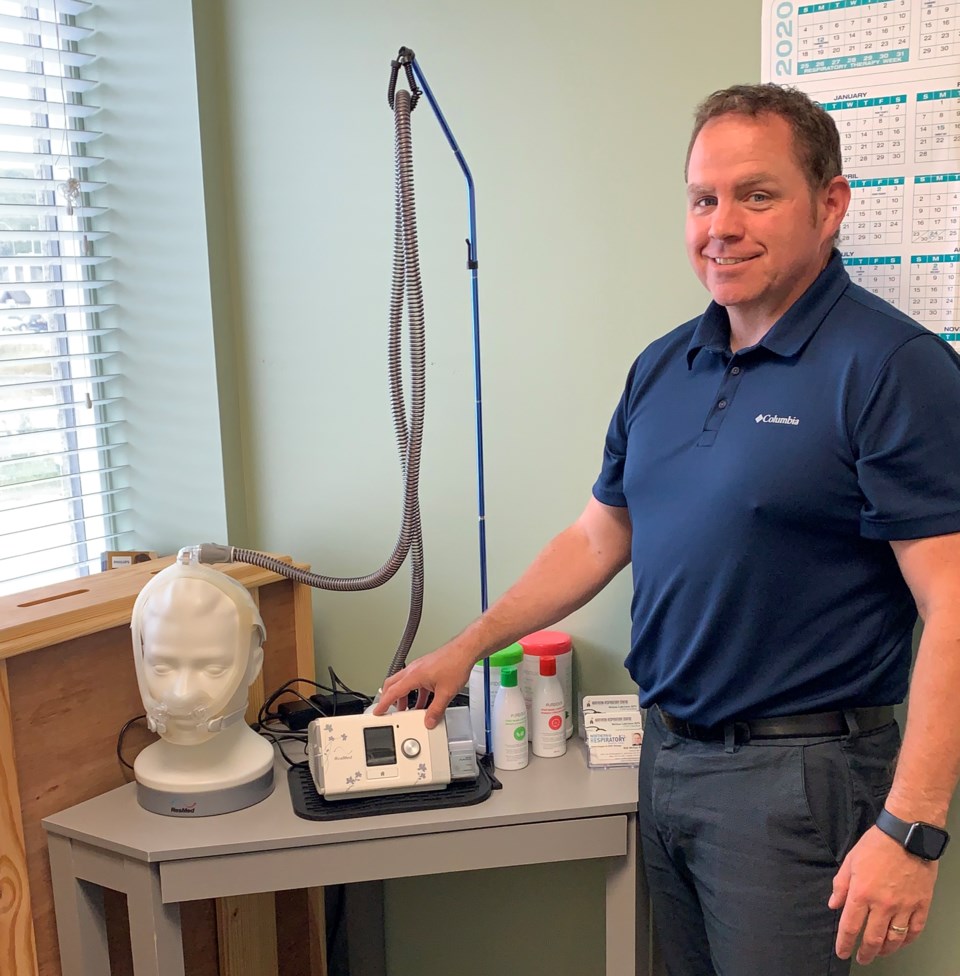A plan by the Ontario government to cut its fixed prices for sleep apnea devices by more than 36 per cent on October 1 will hurt small businesses, make devices unaffordable to some patients, and put the public at risk according to a North Bay registered respiratory therapist.
A news release from Ontario Home Respiratory Services Association (OHRSA) says the cuts come "amid a pandemic when equitable, reliable access to respiratory health care has never been more important."
In Ontario, retailers have to sell products following the government's maximum price list.
Rob McKay works at Northern Respiratory Centre, a small, local business in North Bay that provides Positive Airway Pressure (PAP) devices and therapy to the community.
"With this new cut, on some machines we won't make enough profit to cover my time with a person, but the government mandates that we still have a brick and mortar store to sell these devices," he explained to BayToday.
Despite the government squeeze, that means paying rent, office fees, heat and lighting and all other expenses related to having a physical store.
"So the government is not allowing us to make a profit on these machines at all."
That will mean the government will force companies to make big changes in the way they do business.
The government says it is trying to save money, but McKay says that will come at the expense of patients who will have to pay extra for services now included with the cost of the PAP device.
"In the end, it's going to cost Ontarians more money to get one of these devices because they will end up paying the costs that we need to cover, like wages."
On most machines, the government cut is 36 per cent, but on some, that rises to almost 50 per cent. Presently the government lists a device at $860, but that will drop to $550.
"You will see prices go up and we'll have to implement service fees. People will end up spending more down the road instead of the government paying in the beginning," explains McKay.
"Above and beyond what patients pay right now, they are looking at paying between 300 to 500 dollars more after Oct.1 and on some machines, it could be more than that."
The government typically subsidizes 75 per cent of the cost, so on a PAP machine, the minimum someone would pay would be $215 but they can choose to buy more expensive, nicer masks, and that might tack on another $500 but if new pricing comes in, prices to the patient will likely be over $1,000.
The provincial government feels the cuts are appropriate.
Nipissing MPP Vic Fedeli, in an emailed statement, said the cut is actually good news for Ontarians who rely on these devices.
"Through the new model, client copayments are expected to decrease, resulting in real cost savings for people that need to use these kinds of devices. The Assistive Devices Program (ADP) pricing is in alignment with the findings of the Office of the Auditor General of Ontario, and was confirmed through a review of vendor invoices with manufacturer-to-vendor cost for PAP devices. The new funding model will align the support from the government with the actual cost of manufacturing."
But McKay says a Freedom of Information request showed the government's information is faulty.
"Analysis of the government study says it was very flawed using online pricing from many years ago, not current pricing, not taking into account current wages or building rental costs."
The Ontario Home Respiratory Services Association supports that, saying its own independent study confirmed that most PAP device vendors/providers, many of which are small businesses already struggling with the challenges imposed by COVID-19 and lockdowns, cannot buy PAP equipment below the new fixed prices.
"As a result, many will become unprofitable or have to change business models to compensate for lost funding and coverage for patients," it adds.
"If patients will not – or cannot – pay the extra costs which are expected to average $400-$600 per patient, many vendors will cease offering PAP therapy, and where this service is the vendor's only business, this will result in business closures, job losses and reduced access to the therapy for thousands of Ontarians. In fact, OHRSA’s third-party report found that vendor services closures and service reductions will impact more than 10,000 patients, mostly in rural communities, who will need to travel to large communities to obtain services and support for their therapy."
"My big concern is that if the price goes higher on the out-of-pocket side of things for people, there will be those that can't afford it and not get a machine," says McKay. "We'll have people with untreated sleep apnea out in the public and they become unsafe on the road, unsafe at work and it becomes a dangerous situation. It will cost the government more for health care down the road when we see people have accidents in their cars or at work, putting innocent people at risk.
"Someone is driving and they get tired and cross the centre line and hit another car coming at them, it can definitely be a very dangerous situation if people aren't getting treated because of costs."
The OHRSA’ is urging the provincial government to change these cuts to funding. It's inviting Ontarians to add their voice via its new Access to Air is Access to Care campaign.



